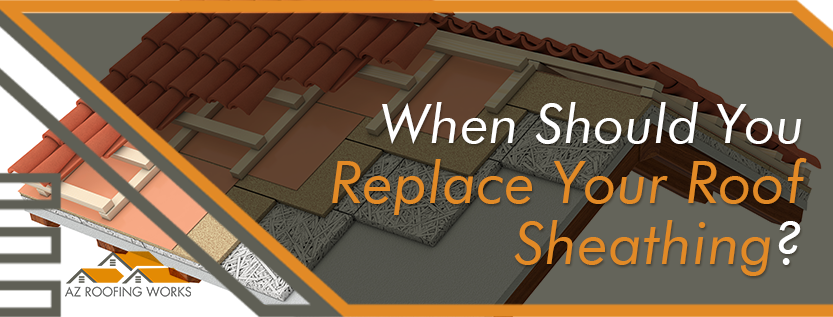When Should You Replace Your Roof Sheathing?
Every year, one in fifty homes in the United States will have an insurance claim for water damage.
This includes water damage to the roof of the house. Rotten roof sheathing is one of the most expensive repairs a homeowner can ever deal with.
When is it time to replace your roof sheathing?
What indicators should you look for to know that it’s time?
Roof sheathing should never need replacing unless it gets water or termite damage.
However, when problems do occur, it’s best to get them resolved as quickly as possible.
Read on to learn some signs that it’s time for you to replace your roof sheathing.
Water Damage
A major sign that something is wrong with your roof sheathing is water damage.
You can often find signs of water damage from the inside of your home.
The first sign of water damage inside your home is ceiling discoloration.
You’ll notice that your ceiling turns a yellowish color where water is an issue.
It might even start sagging or cracking in these areas.
Pay attention to the tops of your walls as well. If you see discolored or cracked paint, then you might have some water damage in your ceiling and walls.
Peeling wallpaper is also an indicator if your walls aren’t painted.
Water damage both looks bad and can be dangerous to the health of your home and your family. It can lead to mold and structural damage.
If your house starts growing mold, then your family could be at risk for health issues later.
Structural damage at your home can be expensive and sometimes impossible to fix.
If you see any of these issues at your house, then you should get your roof inspected right away.
It might be time to replace your roof sheathing.
Wood Rot
Wood rot is caused by water constantly saturating the wood. This causes it to become soft and decay.
The wood will be so soft that you can remove large chunks of it with your bare hands.
You’ll shred it just by rubbing pieces of it between your hands, and it will not splinter.
The wood also stops being firm and sturdy. Any nails in the wood will start to slide out because it’s too soft.
You’ll know this is the case when you can push the nails back in with just one finger.
Rotten wood also starts to sag. Make sure to inspect your house from the outside every once in a while.
If you start to see your roof is sagging from the outside, then your roof sheathing might be rotting.
The problem with wood rot is that it’s like a disease.
It spreads from the original rotting area and infects the wood that’s still good around it. It only stops when there’s no more wood left to rot.
Furthermore, termites love rotting wood. It’s easier for them to eat and destroy than strong dry wood.
They can cause thousands of dollars in damage, and home insurance policies rarely cover termite damage.
Mold
Another danger of moisture and rotting wood is mold. Mold needs areas of high moisture to grow, and many molds also like dark places such as inside your walls and roof.
From there, they spread through your ceiling and walls until you can see it inside of your home too.
The issue is that many molds are dangerous for humans and pets to breathe in.
Any prolonged exposure to mold could cause issues with a person’s lungs. It’s a serious issue that should be resolved as quickly as possible.
Fortunately, mold issues inside of a home are resolvable.
However, if you don’t take care of the root of the issue, then the mold will continue to return and spread.
This means removing the cause of the moisture.
Call a professional to assess the issue if you suspect that you have a mold problem coming from your roof.
If the problem is wet, rotting wood in your roof, then your best course of action is to replace your roof sheathing.
This protects your home and your loved ones from further damage and disease before the issue gets out of hand.
The longer you wait to solve the issue, the more serious and expensive it becomes.
Roof Leaks
The primary cause of all of these problems is usually a roof leak.
This happens when the seal around your shingles is broken and allows rainwater to flow onto your roof deck.
The wood of the roof sheathing becomes saturated and starts to rot.
Furthermore, when the wood is already saturated, the water can’t soak into the wood anymore.
Instead, it continues to flow off of the wood and into your insulation and attic where it will grow mold and damage your ceiling and walls.
If you catch the problem early enough, then none of these will become an issue.
Just make sure to dry everything thoroughly and fix the shingles. Check back occasionally for signs of wood rot or mold.
The bad news is, if you get wood rot or mold, replacing the shingles on your roof won’t be enough to resolve all of the issues.
Now you have rotten roof sheathing and mold in your insulation.
Call an expert quickly when you start to suspect a problem with your roof sheathing.
It’s the best way to prevent structural issues, termites, and mold from costing you expensive repairs.
These problems are more manageable when they’re dealt with quickly.
Replace Your Roof Sheathing Today
If you’re noticing any of the above problems, then don’t wait.
You need to replace your roof sheathing as soon as possible to prevent further structural damage to your home.
The experts here at AZ Roofing Works are here to help you with these issues.
We’re the best in the business for getting any roof repairs done, including replacing roof sheathing.
Our experts will help you every step of the way and get you the best price for service.
Contact us today and see how we can fix your roof issues.
Is your roof reaching the age of replacement? Call the team at AZ Roofing Works! We are the top trusted roof repair experts in Arizona, specializing in roof replacements and roof repairs! Contact us online or call our office directly at (602) 283-3383.






